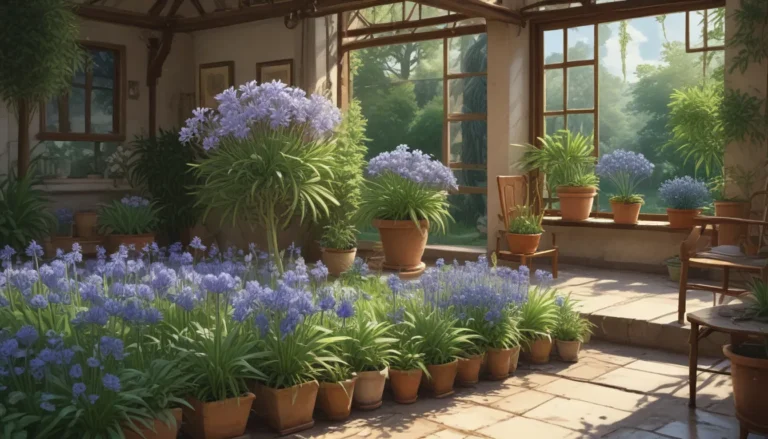How to Grow and Care for Early-Blooming Alpine Aster

Alpine aster, scientifically known as Aster alpinus, is a fascinating cold weather perennial that belongs to the expansive Asteraceae family, which includes popular flowers like daisies, dahlias, and sunflowers. This herbaceous ornamental species stands out due to its early bloom time, low profile, and the unique feature of having a single blossom per stem.
In this comprehensive guide, we will explore everything you need to know to successfully grow and care for the beautiful alpine aster.
Understanding Alpine Aster
Alpine aster, or Aster alpinus, is best suited for USDA Hardiness Zones 4 to 7. This plant thrives in full sun and prefers average to poor, well-draining soil. Its bloom time ranges from late spring to early summer, sometimes extending into mid-summer. Typically, mature alpine asters reach heights and widths of about eight to 12 inches.
Native to the mountains of China and Europe, including the Alps, Alpine aster also has a few wild subspecies found in Canada, the western United States, and Alaska. Unlike many aster species that produce clusters of flowers, the blossoms of Aster alpinus are unique as they are borne on individual stems, similar to daisies.
How to Propagate Alpine Aster
Seeds
- Start Alpine aster seeds indoors for an early start to the growing season.
- Scatter seeds on moist soil and lightly tamp them down, barely covering them.
- Expect germination in about two to four weeks.
- Transplant seedlings outdoors after the last average spring frost date.
Cuttings
- Take cuttings from stems with new leaf growth.
- Dip the ends in rooting hormone and plant them in potting medium.
- Once roots develop, you can transfer the cuttings to their permanent location.
Division
- Divide Alpine aster plants in early spring as they begin to emerge.
- Use a sharp spade to separate a portion of the plant with roots attached.
- Transplant the divided sections immediately into the desired location.
Maintain even moisture during the propagation stage to ensure successful growth. Remember, seeds from native species will replicate the characteristics of the parent plant, while seeds from hybrids may not produce true to the parent traits.
Planting and Growing Alpine Aster
To grow healthy Alpine asters, select a sunny location with well-draining soil. They thrive in poor nutrient soils and prefer a pH level of about 6.0 to 7.5. Adequate spacing of at least 12 inches between plants allows for good airflow and prevents overcrowding.
Alpine asters require minimal water once established and exhibit high drought tolerance. While they self-sow, they are not invasive, making them a low-maintenance plant choice. These versatile flowers can also thrive in containers, provided they are well-draining and receive sufficient sunlight.
Growing Tips:
- Opt for poor soil conditions.
- Avoid using fertilizers.
- Maintain 12-inch spacing to promote good airflow.
- Adjust watering frequency for container plants.
Caring for Alpine Aster
Once Alpine asters are established, they are relatively self-sufficient. However, they prefer well-drained soil and good airflow to prevent fungal diseases. Periodic division of mature plants every few years and deadheading spent blossoms can aid in maintaining plant health and reducing self-sowing.
Tips for Care and Maintenance:
- Ensure adequate drainage and spacing to prevent fungal growth.
- Dividing mature plants promotes plant health and vigor.
- Deadhead spent blossoms to reduce self-seeding.
Popular Alpine Aster Cultivars
When choosing Alpine aster plants or seeds, you may encounter a variety of options, including named cultivars. Some notable cultivars include:
Beechwood
- Lavender petals similar to native New England asters.
- Displays flower heads on individual stems for a low-profile appearance.
Dark Beauty
- Deep purple cultivar with early bloom time.
- Slow-growing and non-invasive.
Goliath
- Lavender-blue flowers with large blossoms.
- Taller height compared to typical Alpine asters.
Happy End
- Features pink-purple double-rayed flower heads.
- Compact growth habit.
Wargrave
- Pink variety with a hint of purple.
White Beauty
- Snowy white flowers for a soft, elegant look.
These cultivars offer a range of colors and traits to enhance your garden landscape.
Managing Pests and Disease
While Alpine asters are generally resistant to pests and diseases, they may be susceptible to issues like nematodes, slugs, and fungal diseases under conditions of excess moisture. Utilizing food-grade diatomaceous earth and ensuring proper drainage and spacing can help combat these issues.
Remember, maintaining optimal plant health is essential to prevent pest infestations and diseases.
Best Uses for Alpine Aster Flowers
Alpine asters are versatile plants suitable for various garden settings, including xeriscapes, rock gardens, containers, and border fronts. Their low water and maintenance requirements make them an excellent choice for busy gardeners. Additionally, Alpine asters attract beneficial wildlife such as bees, birds, and butterflies, adding to the garden ecosystem.
Quick Reference Growing Guide:
- Plant Type: Herbaceous flowering perennial
- Flower / Foliage Color: Pink, purple, white
- Native to: Asia and Europe with some subspecies in the US and Canada
- Hardiness (USDA Zone): 4-7
- Bloom Time: Late spring to early or mid-summer
- Exposure: Full sun
- Attracts: Bees, birds, butterflies
- Height: 8-12 inches
- Spread: 8-12 inches
- Water Needs: Minimal
- Maintenance: Minimal
- Common Pests: Nematodes, slugs, snails
- Common Disease: Aster yellows, wilts, mildew
From the Alps to Your Garden
Bringing the beauty of Alpine aster into your garden adds a touch of elegance and color to your landscape. With its adaptability to various conditions and low maintenance needs, Alpine aster is a charming addition to any garden.
Whether you choose pink, purple, or white cultivars, these stunning flowers are sure to brighten up your outdoor space. Embrace the beauty of Alpine aster and create a flourishing garden ecosystem that attracts beneficial wildlife.
Start your Alpine aster journey today and witness the transformation of your garden into a vibrant and colorful haven. Share your experience and photos in the comments below!
For more advice on growing and caring for asters, explore our additional guides on saving seeds, perennial species, and dynamic late season bloomers. Happy gardening!





